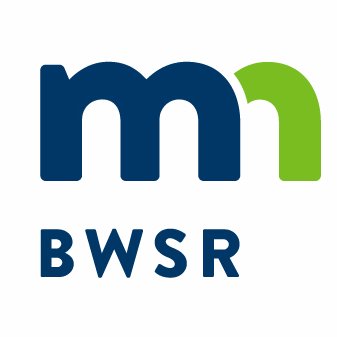Contact: Celi Haga
651-315-5082
St. Paul, Minn.— Cleaner, clearer water. Healthier lakes, rivers, and streams. Today, Minnesota took another step forward toward its water quality goals thanks to funding support provided by the Clean Water, Land and Legacy Amendment. The Minnesota Board of Water and Soil Resources (BWSR) approved more than $13 million in 2017 Clean Water Fund grants at its December meeting for local government projects benefiting Minnesota’s streams, rivers, lakes and groundwater.
“Around Minnesota, local government staff and private landowners are working in partnership with the state to make a difference for our water quality,” BWSR Executive Director John Jaschke said. “Whether it’s restoring wetlands, reducing nutrient runoff, or modernizing septic systems to protect drinking water, these projects are prioritized and targeted to maximize the impact of the Clean Water Fund on our state’s natural resources.”
The Clean Water Legacy funds are used to both protect at-risk waters and target polluted waters throughout the state. Irrigation management, bank stabilization, stream restorations, and well sealing are just some of this year’s projects. BWSR’s Clean Water Fund grants include project funding, grants to accelerate implementation of clean water work, support of community partners programming, and drainage management.
BWSR funded 78 applications totaling $13.4 million dollars this round, but interest in this program continues to outpace available funding. 171 applications were received, totaling $34.4 million in requests.
Some examples of funded projects:
- In northwest Minnesota, the Becker Soil and Water Conservation District (SWCD) will work on a sediment reduction project on the Buffalo River. A variety of conservation practices including water and sediment control basins and buffer strips will result in a 44% reduction in sediment, exceeding the district’s reduction goals for the watershed.
- In the center of the state, Stearns SWCD will work with livestock producers to implement feedlot runoff improvements and eliminate all contaminated runoff from five sites north of the Sauk River and Sauk River Chain of Lakes, improving water quality within a Drinking Water Supply Management Area.
- In the Twin Cities Metro, the Dakota SWCD will install an estimated 20 conservation practices along Trout Brook, a designated trout stream and tributary to the Cannon River. These practices will reduce sediment by an estimated 2,000 tons per year, improving water quality and clarity in the waterbodies.
- In southern Minnesota, the Okabena-Ocheda Watershed District will modify three ponds in the Prairie View Golf Course to help meet water quality standards in Okabena Creek and Lake Okabena. The practices installed as part of the project will remove an estimated 945 pounds of phosphorus annually from the creek, getting the district to 30% of its reduction goal for the watershed.
To see detailed project information and maps showing how the Legacy funds are affecting the land and waters important to you, visit www.bwsr.state.mn.us.
Governor Mark Dayton has declared a Year of Water Action in the state of Minnesota. Governor Dayton has called on Minnesotans to examine their individual responsibility in keeping Minnesota’s water drinkable, swimmable, and fishable for generations to come. Find out more at online at mn.gov/governor or on social media using #WaterActionMN.

